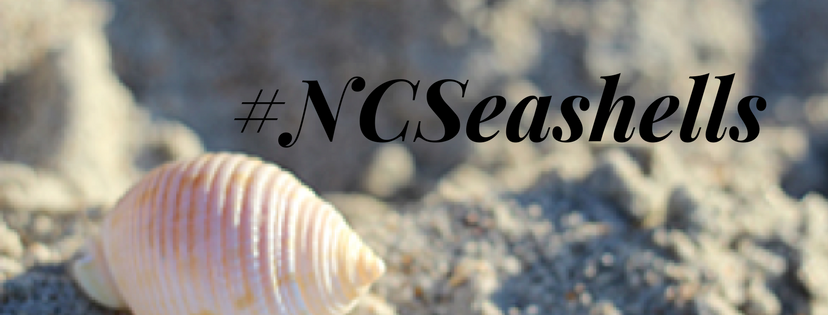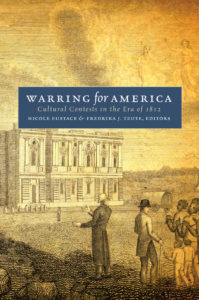
This article originally appeared at Coastwatch Currents, the blog of North Carolina Sea Grant. Seashells of North Carolina is now distributed by UNC Press. For more information and to order, visit uncpress.org.
Turning 20: Seashells of North Carolina
by Danielle Costantini
Help celebrate 20 years of
Seashells of North Carolina—a beloved guide to identifying seashells on our coast.

For avid collectors and casual finders alike, this beachcomber’s bible identifies commonly found shells on our coast.
Written by Hugh Porter and Lynn Houser, this beachcomber’s bible has been trusted by many to assist in the identification of common and rare shells on our beaches. It features photography by Scott Taylor and was edited by Jeannie Faris Norris. The book is published by North Carolina Sea Grant, and now distributed by the University of North Carolina Press.
“We are very excited to partner with UNC Press as the new distributor of Seashells—and together bring this book into its 20th year,” says Katie Mosher, Sea Grant communications director.
With summer fast approaching, people are heading to the beaches to sunbathe, swim, and sift through the sand for treasure. From shark’s teeth to long-forgotten buckets and shovels, what many people prowl the beach for are the beautiful seashells that wash in with the tide.
Seashells are external skeletons of animals called mollusks that once lived inside. The shell protects the soft inner body from predators, as well as from harsh currents capable of tossing the tiny creatures around in the waves.
The most common mollusk shells found on the beaches of North Carolina are of the classes Bivalvia and Gastropodia. The name bivalve comes from the two valves, or parts of the shell, hinged together like a door. Common bivalves are clams, oysters and scallops. Gastropods only have one part to their shell, and include snails and slugs. These facts, among many others, are highlighted in the book.
By the time seashells are picked up on the shore, the slimy creatures inside usually are long gone. All that remains are the calcium-carbonate shells. These shells come in varying sizes, shapes, and colors.

With careful searching, you may be able to find a Scotch Bonnet, the state shell. Photo by Vanda Lewis
“Even today, when I pick up seashells, I am amazed that animals created them. It’s fascinating to think about a creature extracting the calcium carbonate from the ocean water and making a home for themselves,” explains Terri Kirby Hathaway, Sea Grant marine education specialist and avid beachcomber.
To identify a shell, look at the shell structure and markings, a process detailed in Seashells of North Carolina. Color is generally the least reliable indicator, as it is heavily influenced by external factors in the ocean. Two shells of the same species can look very different depending on things like location or sun exposure. Beachcombers usually find shells easier to identify based on other characteristics like texture, size, and shape.
“Veteran shell collectors prefer good black-and-white photographs that show the details of the shell’s surface sculpture and markings,” Seashells notes.
There is no right or wrong time to look for shells. Tides constantly bring in new treasures all day and night. Right before or after low tide is usually when the most shells are exposed. For the largest selection, getting an early start in the morning may be your best bet.
Good sunlight is necessary, as having visibility is important. With this in mind, those long walks on the beach in the rain might not be the best time to search for the shells; however, right after a storm is the perfect time to discover what rough seas have brought in.
On all of North Carolina’s beaches you can find beautiful shells. Coastal Living magazine ranked Ocracoke Island as one of the best beaches for finding seashells in the nation.
Two shells of the same species can look very different depending on things like location or sun exposure.
There may be a lot of competition, though. Many summer days on the coast are crowded with locals and tourists out on the beach.
While enjoying your time on the coast, do remember to be considerate of others and of the beach. Don’t go on private property. Be cognizant of the rules of state and national parks. Unless you are prepared to take care of a new pet, it is best to make sure the shell is empty of its previous inhabitant before you take it home. Most importantly, have fun and appreciate the beauty of nature in North Carolina.
Celebrate the warm weather and Seashells of North Carolina. Every Sunday, now through Labor Day, we will be posting on Twitter, Facebook and Pinterest. Look for the hashtag #NCSeashells from @seagrantNC and @UNCPressblog to learn more about beachcombing, shells, and the book itself.
If you have a great shell you just can’t wait to share, tag us and use the hashtag, or send a picture to dncostan@ncsu.edu.
If you are interested in buying Seashells of North Carolina, it is available for purchase online at ncseagrant.ncsu.edu/bookstore or at uncpress.org. Also check bookstores and gift shops where UNC Press publications are sold.
 It’s Free Book Friday!! Enter to win a copy of Lessons from the Sand by Charles O. Pilkey and Orrin H. Pilkey via Goodreads. Each easy-to-follow activity is presented in full color with dozens of whimsical and informational illustrations that will engage and guide readers through the experiments. Great for taking along on your next beach vacation! The giveaway ends on Friday, July 15, so get your entry in now!
It’s Free Book Friday!! Enter to win a copy of Lessons from the Sand by Charles O. Pilkey and Orrin H. Pilkey via Goodreads. Each easy-to-follow activity is presented in full color with dozens of whimsical and informational illustrations that will engage and guide readers through the experiments. Great for taking along on your next beach vacation! The giveaway ends on Friday, July 15, so get your entry in now! Lessons from the Sand by Charles O. Pilkey and Orrin H. Pilkey
Lessons from the Sand by Charles O. Pilkey and Orrin H. Pilkey


 Gettysburg National Military Park
Gettysburg National Military Park






 Happy Summer! In honor of the summer solstice, we’re posting our suggestions for your summer reading list. If you’re planning a fun tropical vacation or just heading to your neighborhood pool, UNC Press has your perfect summer read. Pick up a fun guidebook or new biography, and don’t forget about our 40% sale!
Happy Summer! In honor of the summer solstice, we’re posting our suggestions for your summer reading list. If you’re planning a fun tropical vacation or just heading to your neighborhood pool, UNC Press has your perfect summer read. Pick up a fun guidebook or new biography, and don’t forget about our 40% sale!












 In this stunning book, nature photographer and ecologist David Blevins offers an inspiring visual journey to North Carolina’s barrier islands as you have never seen them before. These islands are unique and ever-changing places with epic origins, surprising plants and animals, and an uncertain future. From snow geese mid-flight to breathtaking vistas along otherworldly dunes, Blevins has captured the incredible natural diversity of North Carolina’s coast in singular detail. His photographs and words reveal the natural character of these islands, the forces that shape them, and the sense of wonder they inspire.
In this stunning book, nature photographer and ecologist David Blevins offers an inspiring visual journey to North Carolina’s barrier islands as you have never seen them before. These islands are unique and ever-changing places with epic origins, surprising plants and animals, and an uncertain future. From snow geese mid-flight to breathtaking vistas along otherworldly dunes, Blevins has captured the incredible natural diversity of North Carolina’s coast in singular detail. His photographs and words reveal the natural character of these islands, the forces that shape them, and the sense of wonder they inspire. In this lively collection of interviews, storied music writer Jas Obrecht presents a celebration of the world’s most popular instrument as seen through the words, lives, and artistry of some of its most beloved players. Readers will read—and hear—accounts of the first guitarists on record, pioneering bluesmen, gospel greats, jazz innovators, country pickers, rocking rebels, psychedelic shape-shifters, singer-songwriters, and other movers and shakers. In their own words, these guitar players reveal how they found their inspirations, mastered their instruments, crafted classic songs, and created enduring solos. Also included is a CD of never-before-heard moments from Obrecht’s insightful interviews with these guitar greats.
In this lively collection of interviews, storied music writer Jas Obrecht presents a celebration of the world’s most popular instrument as seen through the words, lives, and artistry of some of its most beloved players. Readers will read—and hear—accounts of the first guitarists on record, pioneering bluesmen, gospel greats, jazz innovators, country pickers, rocking rebels, psychedelic shape-shifters, singer-songwriters, and other movers and shakers. In their own words, these guitar players reveal how they found their inspirations, mastered their instruments, crafted classic songs, and created enduring solos. Also included is a CD of never-before-heard moments from Obrecht’s insightful interviews with these guitar greats. James Beard award–winning author Adrian Miller vividly tells the stories of the African Americans who worked in the presidential food service as chefs, personal cooks, butlers, stewards, and servers for every First Family since George and Martha Washington. Miller brings together the names and words of more than 150 black men and women who played remarkable roles in unforgettable events in the nation’s history.
James Beard award–winning author Adrian Miller vividly tells the stories of the African Americans who worked in the presidential food service as chefs, personal cooks, butlers, stewards, and servers for every First Family since George and Martha Washington. Miller brings together the names and words of more than 150 black men and women who played remarkable roles in unforgettable events in the nation’s history.










 I bought my copy used at a bookstore in Minneapolis—I’m fairly certain that it was the iconic Book House in Dinkytown before it became a Starbucks—after I had left New York for the first time. It’s a first edition that once possessed the original dust jacket, a photographic cover featuring the title in red san serif block lettering hovering over the greyscale skyscrapers of mid-century Midtown as viewed from the bird’s eye.
I bought my copy used at a bookstore in Minneapolis—I’m fairly certain that it was the iconic Book House in Dinkytown before it became a Starbucks—after I had left New York for the first time. It’s a first edition that once possessed the original dust jacket, a photographic cover featuring the title in red san serif block lettering hovering over the greyscale skyscrapers of mid-century Midtown as viewed from the bird’s eye.